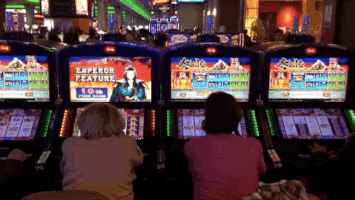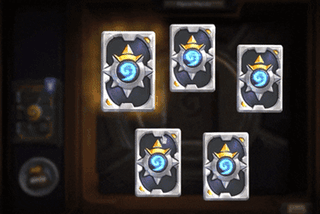Loot Box
Loot boxes are a form of digital wares sold within an online video game. Each box can be used once to receive randomized in-game items that either provide cosmetic changes to the game and player, or provide advantages over other players. Depending on the game, loot boxes may also be referred to as packs, bundles, crates or chests. Loot boxes are typically found only in games with a multiplayer aspect, marketed by the visual feedback from opening a loot box as well as the benefit provided by the items. Due to the randomized nature of loot boxes, they can be seen as a form of digital gambling that brings ethical issues into consideration.
Contents
Loot Box Design
Game Design
Loot boxes are often slowly given to players as they progress through the game, but are also always available for purchase. This model allows players to be hooked in by the free loot boxes, leading them to purchase more. Depending on the design, loot boxes can give items that give a player an advantage, or give purely cosmetic changes. This design decision may have a drastic impact on gameplay if the former option is chosen. It brings in a “pay to win” model that ends up disadvantaging players who choose not to pay. The free model of a game is often marketed as being able to unlock everything eventually, but may take a substantial amount of time compared to paying. The timing to unlock everything is a design decision that shows a trade off between monetization and good gameplay.
Items received from loot boxes often have a set rarity, with rarer items being either more advantageous or more visually appealing. Synonymous with the grand prize in a slot machine, the rarest items are often the main driver of the loot box model as a whole.
Visual Design
Loot boxes are purely digital goods, making the appeal contingent on the visual design of the loot box and it’s rewards. Like traditional gambling systems such as slot machines, the act of opening a loot box is designed to be satisfying and colorful. The rarest items available are often the ones that contain the most intense visual effect.
Free vs Paid Games
Loot boxes were traditionally found in free to play games, giving the developers an avenue to profit from their free model. As loot boxes became more commonplace in games, large game publishers took notice, adding in loot boxes to games that were not free. Adding an additional pay to win mechanic in a paid game has historically received large community outrage. There are more harmless loot models in paid games that only provide cosmetic benefit. Regardless of whether or not the loot boxes follow a pay to win model, their design mirrors gambling mechanics. Audiences of traditional gambling are much older than video game audiences, exposing younger players to the effect and consequences of gambling.
Loot Box Models
Team Fortress 2
Team Fortress 2 is considered to have one of the earliest successful loot box models. Players are able to collect crates by playing the game, that can then be opened by purchasing a key. TF2 was developed and published by Valve, which built a digital marketplace that allowed players to buy and sell virtual items with real money or other virtual items. Their marketplace created a real world economy that allowed players to make money by trading. The highest rarity and valued items in TF2 are the cosmetic hat items that can be worn in game. One of the most expensive hats has been valued at over $10,000. [1]
Hearthstone
Hearthstone is a free to play online card game developed by Blizzard Entertainment. It was Blizzard’s first free to play game. Players earn and purchase packs of cards that they can play in their decks. The rarest legendary tier of cards contain unique and powerful abilities. Blizzard continually pushes out new cards and packs, requiring players to continually purchase packs to be able to have all of the cards. It has been estimated to be virtually impossible to get every card without paying money. Hearthstone is notorious for having one of the most enticing pack opening experience, leading players to go as far as creating a pack opening simulator. [2]
Overwatch
Overwatch is a game also developed by Blizzard. Compared to Hearthstone, however, Overwatch's loot box model only contains cosmetic items. These loot boxes can contain things such as skins, emotes, and victory poses. Overwatch's loot boxes sometimes also has new items added to them based around special events including the Olympics, Halloween, Christmas, Anniversaries, etc. Blizzard has had its fair share of criticism involving the loot box system surrounding such events, and its short window to get the event items that players may want.[3] Like Hearthstone, Overwatch is an example of a game with a satisfying pack opening experience, given it's use of interesting animations following opening the box.
Star Wars Battlefront 2
On its initial release, Star Wars Battlefront 2 had a pay-to-win system in place allowing players to unlock more powerful weapons and hero characters by opening loot boxes. Battlefront 2 received intense backlash from the community after showing their loot box model in a beta test. Players who choose not to purchase loot boxes in Battlefront 2 can unlock everything, but it has been estimated to take over 4,500 hours to do so. The backlash can be seen from a Reddit comment from a Battlefront 2 developer, which became the most downvoted comment on Reddit.[4] In response to the major community backlash, Electronic Arts, the publisher of Star Wars Battlefront 2, officially removed all non-cosmetic items from their loot boxes making it impossible to gain advadage over players by paying more than others.[5]
Ethical Issues
Gambling
Loot boxes contain all of the elements required for traditional gambling. The purchase of a loot box represents a transfer of wealth for a future event. [6] This future event is randomly decided and set by the developer, allowing them to tune their model to maximize profit. Younger players experience gambling for the first time with loot boxes. The UK Gambling Commission [7] does not consider loot boxes as a form of gambling, as they claim the items received do not have any monetary value. The only difference between loot boxes and real world gambling is the absence of a true monetary payout, however games with real money marketplaces can be used for payout, and many have made thousands of dollars. The design choices are clearly seen to keep the player buying loot boxes. Often right after opening a loot box, a player is prompted to buy additional loot boxes, building upon the addictive model.
Games which allow players to trade virtual goods received in loot boxes for money can be used to gamble further. Gambling sites for the popular game Counter Strike: Global Offensive have increased in popularity over the course of the game's lifetime. Players are able to trade their virtual goods to an escrow service ran by the gambling website, allowing them to risk their items at a chance of obtaining more expensive items. [8] Hundreds of sites have been found to be scams, stealing the items players trade for gambling[9]. Legitimate gambling websites bring ethical concerns. Anyone within the game can register, purchase items with real money, and gamble for the chance of making monetary profit. Younger audiences are susceptible to gambling without proper education.
Transparency
One of the leading reasons why players consume loot boxes is the perceived rarity of the items they could win. This rarity is almost never expressly relayed to the player. Some games will indicate which items are rare and which are common but often do not have any hard data or statistics on how likely the player is to win the item. Because of this, regulations are starting to spring up in Japan and China. For example, the mobile game Fire Emblem: Heroes communicates to its players that there a 3% chance that players will be able to summon a five-star character. This number then starts to increase after the player uses multiple summons in a single game. Another example is the popular shooter Overwatch. Due to Chinese gambling laws, the Overwatch developers had to disclose that the loot box crates will doll out a legendary item after opening approximately 13 crates. This number is different for each country as some countries have stricter gambling regulations than others. [10]
References
- ↑ TF2 marketplace page on one of the most expensive items link
- ↑ Hearthstone Pack Opening Simulator link
- ↑ Chalk, Andy. Anniversary event problems responded to by Director Jeff KaplanRetrieved on 14 Apr 2018.
- ↑ The most downvoted comment on Reddit link
- ↑ Revamped Progression is Coming Soon. EA. March 16, 2018. https://www.ea.com/games/starwars/battlefront/battlefront-2/news/progression-update
- ↑ “IS THE BUYING OF LOOT BOXES IN VIDEO GAMES A FORM OF GAMBLING OR GAMING?” Gaming Law Review, www.liebertpub.com/doi/full/10.1089/glr2.2018.2216. [1]
- ↑ Loot boxes within video games, www.gamblingcommission.gov.uk/news-action-and-statistics/news/2017/Loot-boxes-within-video-games.aspx. link
- ↑ Wikipedia: Skin Gambling wikipedia.org
- ↑ CS GO Scam website list gist.github.com
- ↑ Alexandra, Heather. “Loot Boxes Are Designed To Exploit Us.” Kotaku, Kotaku.com, 13 Oct. 2017, [kotaku.com/loot-boxes-are-designed-to-exploit-us-1819457592]

